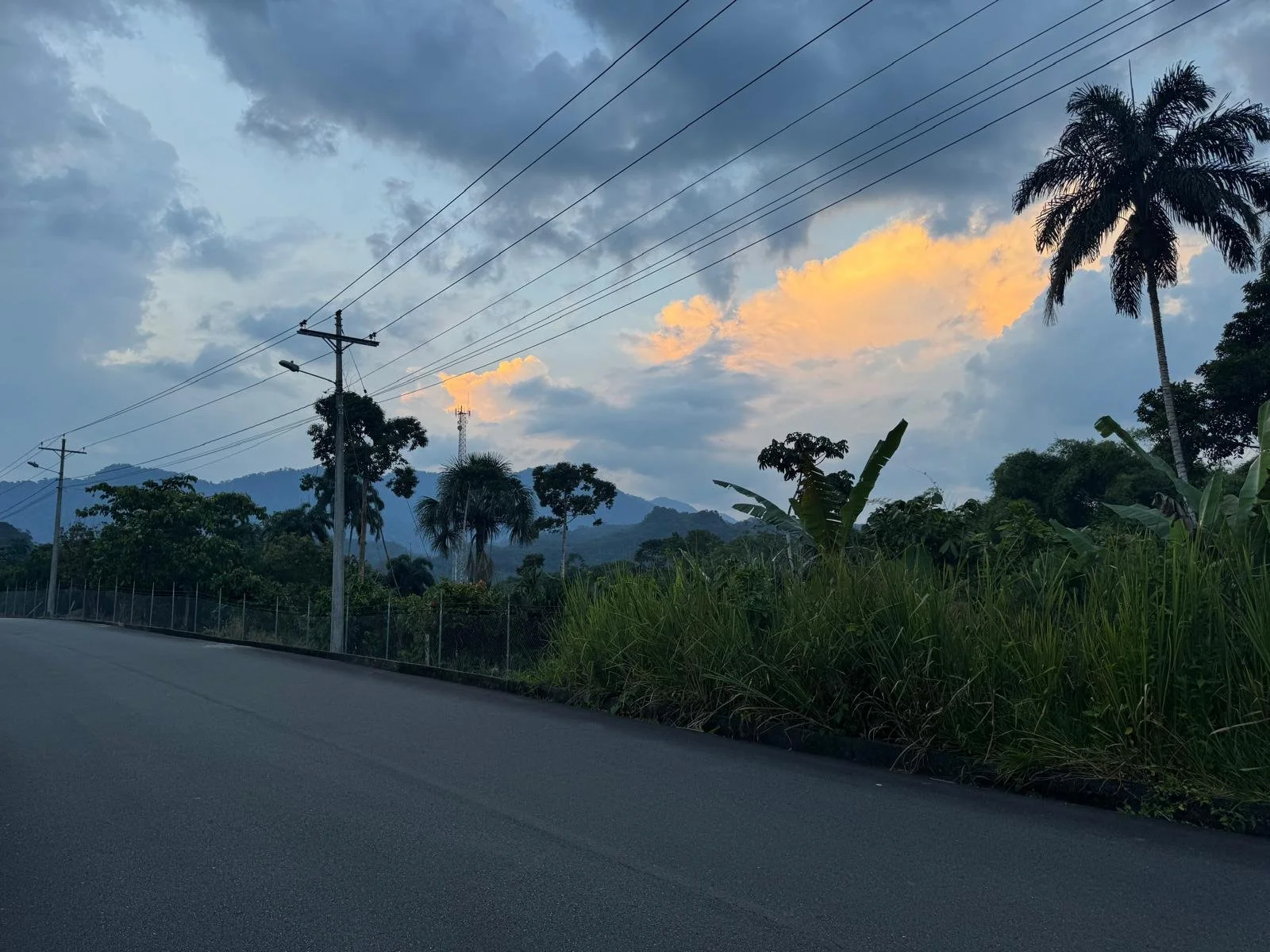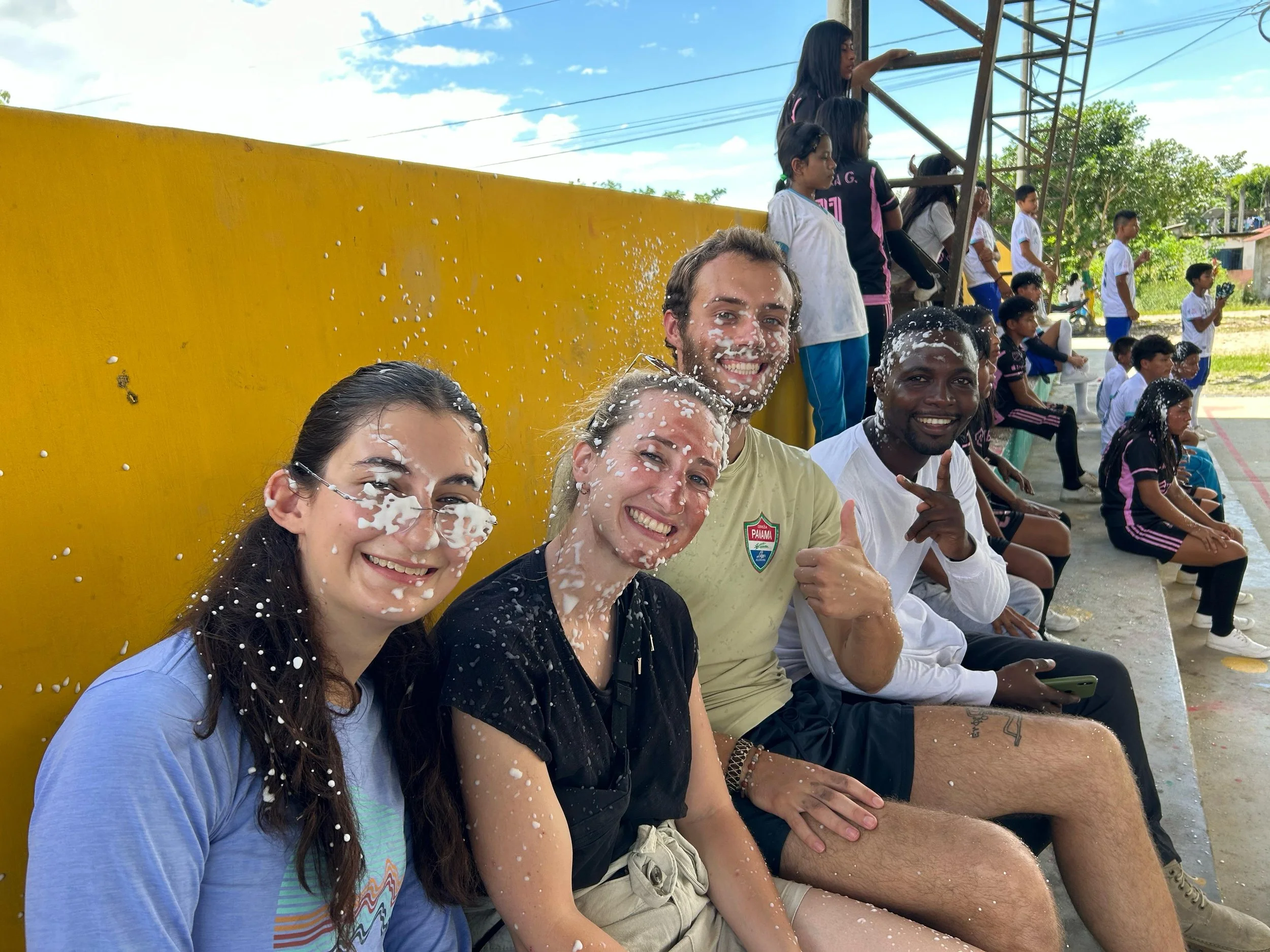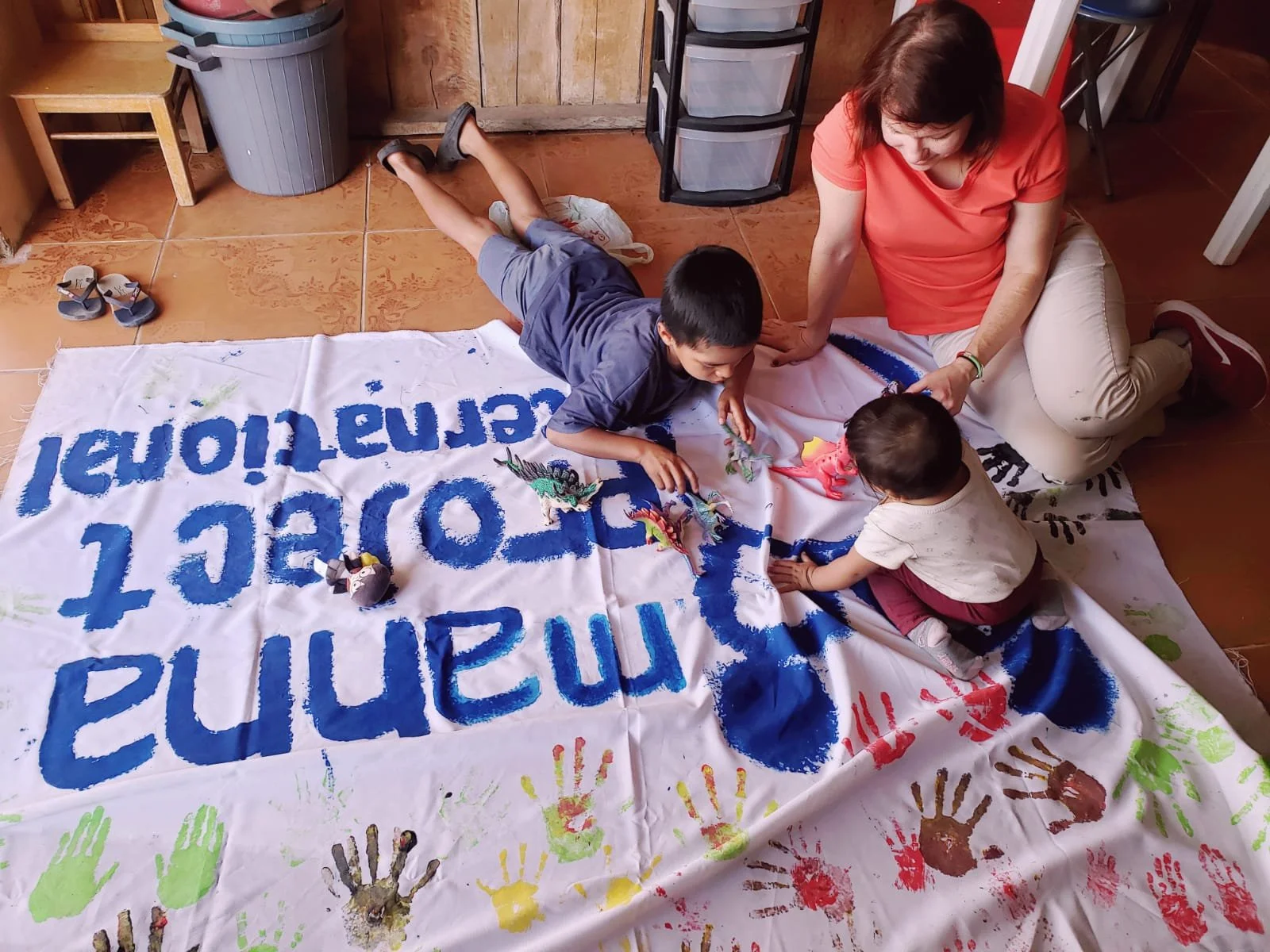The bus is definitely the most widely used form of public transportation in Ecuador. What’s it like to ride the buses of Ecuador? Fantastic question. Wonder no longer, I have the inside scoop for you. What follows is an in-depth breakdown of what to expect on a bus ride, from embarkation to disembarkation, including the key characters you’ll encounter along your journey.
Let’s start with getting on the bus. Most bus routes have established bus stops, but know that you can pretty much make any spot on the street your own personal bus stop. Here, we “hail” buses the same way we hail cabs: raise your hand out in the street, and the bus driver will know to stop. I use the term “stop” lightly because the buses of Ecuador never truly stop. You will never get on or off a bus that isn’t still moving. While we’re on the subject, allow me to introduce you to your first character in the comedy of errors that is your bus ride: The Driver.
The Driver
His main responsibilities include driving the bus and opening the front and back doors. Usually, he is good about doing the latter because there are buttons passengers can press to alert him to open the door. Sometimes though, passengers just yell “Gracias!” to get his attention, and he eventually opens the door. The driver is also (apparently) responsible for never truly stopping, for speeding up right before speed bumps and for cutting every turn REALLY close, especially when passing other buses.
At night, most of the buses have unnecessarily flashy colorful lights on the outside and inside (which I assume is controlled by the driver), and on long bus rides, many buses play movies with obnoxiously loud volume (which I also assume is controlled by the driver… who probably just selfishly wants to hear what’s happening). You will have almost no contact with the driver along your Ecuadorian Bus Journey, but I figured he was worth mentioning in case you had any curiosity about who the man behind the wheel was.
In reality, the driver is merely a figurehead. The true person running the show is our next character, The Ayudante.
The Ayudante
The driver’s right-hand man. Responsible for collecting the bus fare (or pasajes) from every passenger (an extremely difficult job if you remember that they have to walk on a moving (and often really crowded) bus with a handful of coins to collect fare and give change. Of course, the ayudante (the Spanish word for helper) expertly holds two stacks of coins in his palm and folds either a $20 bill or a $10 and keeps it weaved in his fingers. Ayudantes are usually seen repping their respective buses by wearing polos with the bus name embroidered on them. Although I’ve been using the pronoun “he”, every now and then you will be pleasantly surprised by a female ayudante (who usually accessorizes her uniform with a jacket and fanny pack).
Other responsibilities of the ayudante include wiping off the fog from the windshield and doors of the bus, yelling to the driver when he should stop/can keep driving and yelling at passengers to get on or off the bus. Upon waving a bus down, the first person to hop off the bus will be the ayudante who will say the following, repeating phrases in rapid fire Spanish: “Suba! Suba! Suba! Siga no mas!”, which both essentially mean “climb up/get on.” This is always particularly comical to me because this is partially what makes the Ecuadorian bus experience seem like such a rushed affair. Of course I’m going to get on the bus! What else did you think I was going to do?? Sit here and ponder whether or not to get on?? Just give me a second, gosh!
It is, of course, worth mentioning that despite the average height of this country being well under 5’6”, the stairs on the buses are HUGE steps, making it quite impossible to “suba” as quickly as the ayudantes order you to. It is also worth mentioning that the ayudantes are responsible for grabbing toddlers that are trying to get on and off the bus and helping them. None of the parents seem to mind that a total stranger is grabbing their children and helping them on or off a vehicle that is still moving, so I guess it is a welcomed service.
So you’ve ascended the stairs. You grab onto the handlebars attached to the ceiling while the bus wildly swings left and right. If you’re unlucky, the bus is packed and you’re crammed against some of the characters I’m about to mention. If you have things in your hand, you simultaneously juggle them while finding your change to give the ayudante when he or she circles around and asks for it. If you’re lucky, the bus is not too crowded and you’re able to stumble to your seat and more comfortably look for your pasaje in your wallet. The main question is- where do you sit?
The front is not ideal for a variety of reasons. If you are claustrophobic, it can seem crowded in the front when people are waiting to get off. If you are a nervous person, you probably don’t want to see how close the driver always comes to almost hitting other buses. If you are an impatient person, you don’t want to be directly behind the driver’s seat because there is usually a wall there that blocks your view. Finally, if you are an easily frustrated person, you probably don’t want to read the signs that encourage you to wear your seat belt (because there aren’t any) or the signs that discourage you from getting on or off a moving bus (because you have no choice in this matter). So the front is out.
The back is also not ideal for a variety of reasons. To start, it’s treacherous to walk on a moving Ecuadorian bus. Unless you’re an ayudante, you should try to minimize your time spent walking in the aisle. Next, in the same way the front gets crowded, the back does as well because there’s a back door. At times, the driver forgets to close the back door so you will often be subjected to the elements (rain and wind). Finally, the back of the bus is the least smooth ride out of all the seating options.
This leaves us to pull a Goldilocks and sit right in the middle. This gives you the vantage point you need, the space you want and the perfect amount of life or death time spent walking in the aisle.
Now you’re sitting in your seat. Different buses have different seat cushions and window decoration combos. (Trust me, you’ll KNOW if your bus is a fancy new one with leather seats, or if it’s been in circulation for a while and needs a tune up.) You pay the ayudante and now have time to people-watch until you have to get up and get off. Who’s around you?
The Sleeping Old Guy
Does exactly as his name suggests. No surprise there. Usually is wearing a felt fedora and a sweater vest. Generally not problematic unless he stops leaning against the window and starts leaning on your shoulder in his sleep. I mean, who wants to push a sleeping old guy off their shoulder? It just seems cruel.
The Lady with the Huge Sacks Stuff
This lady doesn’t usually sit, because of her huge bags (of vegetables, of blankets, of fruits, of plants). If she’s an older woman, most people will help her out with carrying her things and offer her their seat. This woman is usually harmless, unless in her huge bags she has other contents, bringing me to our next character…
The Lady with the Live Chickens
Oh yes, she exists. You don’t know what’s in the bags until they move… or make noise…or both.
The Guy with the Adorably Small Animals
One of my favorite frequent flyers. Bonus points if the guy is cute. Typically carries tiny puppies, but sometimes these guys also have little kittens.
The Students
These troublemakers come in waves based on the time of day. If school just let out or is about to start, prepare yourself for an influx of students in matching uniforms popping gum, laughing and listening to music. They’re generally mellower in the morning before school. But if you’re on the bus in the afternoon, forget it.
The Salesperson
Can be any age and any gender. Typically gets on the bus from the front entrance and gives a schpeel on what they’re selling and why. Merchandise ranges from fruit to candy to gum to pencils to highlighters to homemade ice cream. After the schpeel, the salesperson will walk up and down the aisles offering his products to the passengers. At times, the passengers take the products, and when the salesperson returns they either pay him for it or just give it back.
The Entertainer
My personal favorite. Has a boombox and sings or raps over music. At times brings a guitar. After the performance, he walks down the aisle to collect donations from passengers.
Finally, thanks to the ayudante (who yells every single stop as you approach it) you realize your stop is the next one. If you’re sitting in the aisle seat, it’s easy to get up. If you’re sitting in the window seat you essentially climb over the person in the aisle seat (because they usually don’t get up for you). I didn’t specifically profile this person, but I’d call them The Jerk if I were going to make such a profile. The Jerk is the umbrella term for anyone who sits in the aisle seat and won’t simply move into the window seat for you to sit next to them. Conversely, this person does not get up when you need to leave, either.
Anyways, you’re almost there. You climb over The Jerk and stumble into the aisle. You keep stumbling down the stairs and hop off the bus that’s still moving. Pro tip: walk off the bus with your right foot so that the bus doesn’t catch it while it’s moving forward.
And there you have it. You just survived your first trip (and every succeeding trip because they are all the same) on an Ecuadorian bus. Although this was a painstaking amount of detail, for further explanation, check out this video I’ve spliced together for your viewing pleasure.












